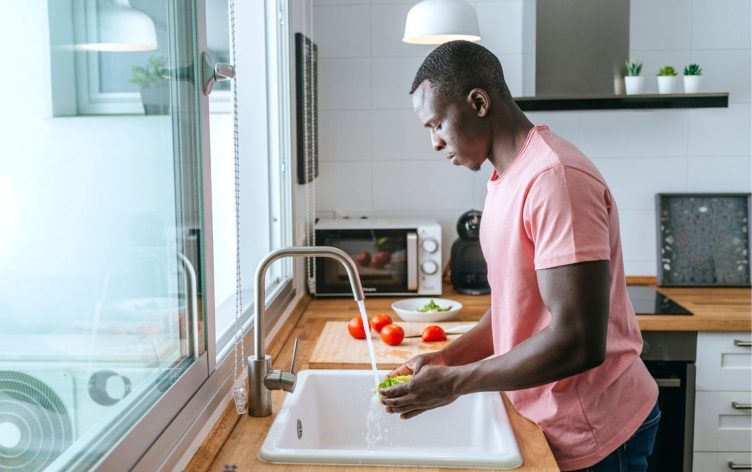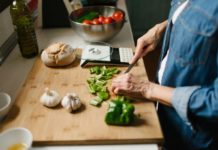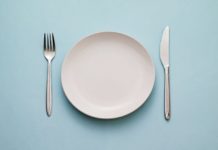
A Dietitian’s Advice For Setting Your Kitchen up For Success
When it comes to losing weight, a supportive kitchen environment goes a long way. As a registered dietitian, I truly believe your kitchen is your partner in health, and creating a space that supports your goals is the secret to long-term success.
Learning how to get a delicious meal on the table fast is a great skill to have, and it requires two main things: the right mindset and a kitchen that’s organized, equipped with essential tools, and well-stocked.
Here are my best tips to help you optimize your cooking space for success and boost your confidence in the kitchen!
MINDSET MATTERS
First things first, your mindset matters. It can actually make or break your success when it comes to creating a healthy lifestyle, even in the kitchen. In some cases, a messy kitchen coupled with an out-of-control mindset can make you more vulnerable to unhealthy food choices. This is why how you feel in your kitchen is so important, and creating a positive mindset about eating healthy matters. Here are some ways to feel good every time you walk into your kitchen:
- Pre-clean. Before starting to cook, make sure your kitchen is clean! Wash any dishes, take out the trash, and clear off the table and countertops if cluttered.
- Set the mood. As you start to prep for dinner, take in some deep breaths, turn on music or a podcast, and choose to relax and enjoy the experience.
- Think ahead. Keep healthy food and snacks (like fresh fruit) in plain view on the countertop instead of tempting foods like bread, rolls or baked goods.
- Out of sight. Store chips, snacks and treats in a drawer or cabinet, so they aren’t the first thing you see when you open the pantry door.
- Have a fridge strategy. Store healthy snacks and leftovers in glass containers in the front of the fridge so you can see them easily when you’re hungry.
- Snack smart. Create your own grab-and-go snack bags of popcorn, salmon jerky or trail mix. Stock your fridge with homemade energy balls, hard-boiled eggs, hummus kits, or chia pudding in 4-ounce Mason jars.
- Inspire yourself. Create a chalkboard wall in your kitchen for inspirational quotes and motivational reminders.
ORGANIZE & DECLUTTER
Having an organized kitchen is essential for creating healthy meals quickly and efficiently. From the spice rack to the utensil drawer, a little organizing and decluttering can go a long way. Here are a few ideas to get started:
- Take stock. Donate or repurpose duplicate utensils or items you never use. Do the same with your scratched cookware. Also, make a note of what you need that you don’t already have. Dying for a garlic press or new vegetable peeler? Start a wish list.
- Mind your oils. Check the expiration dates on your cooking oils and toss any that are expired. Also, replace highly processed vegetable oils with olive oil or avocado oil.
- Out of site, out of mind. Get strategic with your appliances. If you want to make more crock pot meals or use that air-fryer, make some space for it on the countertop so it’s not a chore to use.
- Like attracts like. Store similar items together so you know what you have on hand. I store all my measuring spoons in a mug for easy use and stock my baking stuff together on a tray inside my pantry. I also have my smoothie fixings in a basket near my blender.
- Organize your spices. Consolidate any duplicates and stack spices by how often you use them. Separate the herbs, spices and oils you use regularly. I keep my everyday favorites on a small tray right on the countertop for easy access when cooking.
TOOLS FOR SUCCESS
It’s tough to feel confident in the kitchen or make healthy meals in a snap if you don’t have the right tools on hand. Here’s a list of essentials I use every day in my kitchen.
- Knives. A chef’s knife is a cook’s BFF, but a good paring knife, carving knife and serrated knife are must-haves, too. And don’t forget a knife sharpener! You won’t believe how much faster you can chop and slice if you aren’t fighting with a dull knife. Sharpen your knives once per month.
- Cutting boards. Cutting boards are essential kitchen tools! A wooden board is great for chopping veggies and meal prep, while a non-porous board is best for meats and fish (and won’t dull your knives).
- Measuring cups and spoons. I have two sets each of measuring spoons and measuring cups (in case one set is dirty) and a 2-cup glass version for liquids.
- Food scale. A small digital food scale for measuring recipe ingredients given in weight is also great for learning portion sizes (and a must for pour-over coffee!).
- Mixing Bowls. A set of mixing bowls in graduated sizes with lids are perfect for meal prep, marinating foods, tossing roasted veggies, baking, etc.
- Sheet pans. Sheet pans are so versatile in varying sizes. Great for roasting vegetables, sheet pan dinners, roasting meats and chicken, and of course, baking cookies.
- Cookware. A Dutch oven with a lid and two good saucepans (with lids) are staples for making grains, boiling eggs, soups, sautes, etc.
- Skillets. A cast-iron skillet is a favorite cookware staple. I use my 5-inch or 10-inch skillet for most things, from scrambled eggs to pan-seared salmon.
- Covers and wraps. Aluminum foil, parchment paper, wax paper, and linen bowl covers will pretty much “cover” everything.
THE BOTTOM LINE
Getting healthy isn’t just about the food, it’s also about how you feel about your environment. Taking the time to organize and stock your kitchen is the first step toward building a home cooking habit that sticks. With these simple strategies and a little bit of practice, you can transform your relationship with your kitchen and your health!
Make progress every day while you work on mini fitness and nutrition goals, like walking more steps or learning to track macros. Go to “Plans” in the MyFitnessPal app for daily coaching and easy-to-follow tasks to keep you motivated.

































